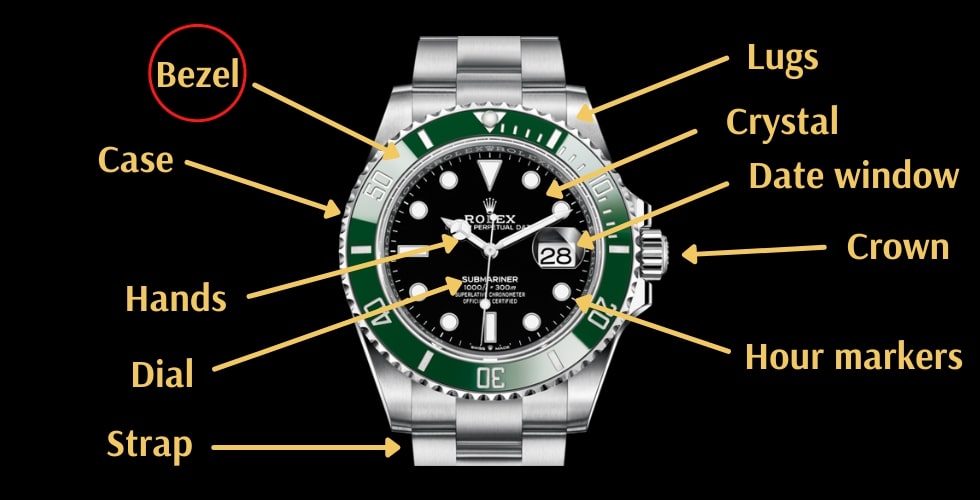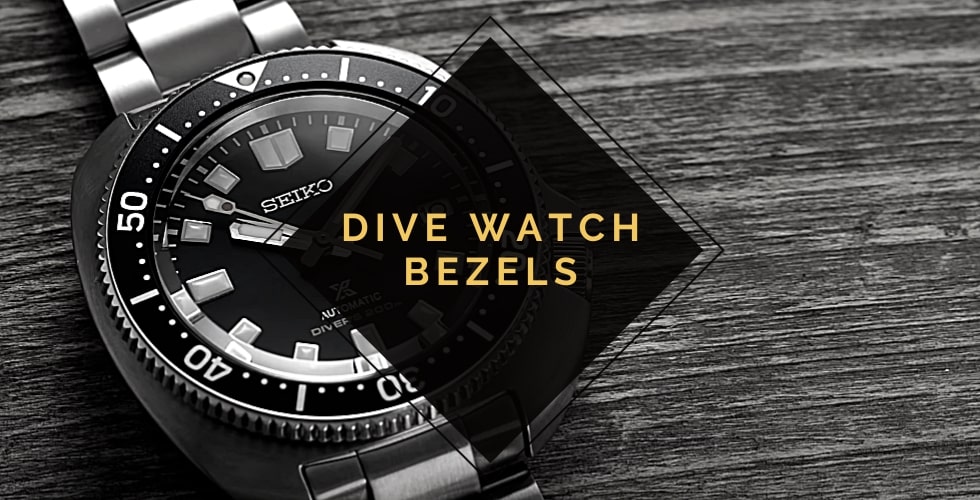The horological industry has certainly come a long way since the introduction of the world’s first watch in the 16th century.
Nowadays, the choice of timepieces and the unique functions they offer is really stark.
Although they can differ on so many levels, what connects all types of watches is the presence of a bezel. Whilst there are many kinds of bezels to pick from, the one that is getting probably the biggest share of attention is a rotating bezel.
Rotating bezels can be either unidirectional or bidirectional. Although dive watches are predominantly known for utilizing them, they’re not the only type to do so.
So, why do dive watches have rotating bezels? And what is the purpose of rotating bezels in other watch types? Continue reading. In this article, we will cover every inch of this intriguing (especially for newbies) subject.
Without further delay, let’s go.
So, What Is a Rotating Bezel?
Before we begin discussing the rotating bezel purpose, it would be wise to know what on earth is a watch bezel anyway.
As explained in our previous article, a bezel is a ring around the watch face that secures and attaches the watch crystal to the case. First and foremost, it boosts protection against dial damage.

A rotating bezel is just one of many types around. As the name suggests, it’s one that can be turned around. There are two types of rotating bezels:
- Unidirectional (one that can be moved only in one direction, usually clockwise)
- Bidirectional (one that can be moved both ways)
Nowadays, the vast majority of newly-released watches with rotating bezels are unidirectional. This is to minimize the risk of accidentally subtracting the minutes.
Why Do Dive Watches Have Rotating Bezels?
As already mentioned, dive watches are the leading (but not only) type that utilizes the rotating bezel.
Dive bezels are known to include grooves so they are easier to hold and spin in more demanding surroundings, ie. at bigger depths underwater. They help divers measure elapsed time underwater which is always a great way of minimizing the risk of an injury or even death.
This calculation goes a long way in helping a diver keep track of the amount of oxygen left during that specific dive.
Whether you’re a professional saturation diver or a beginning scuba diving enthusiast, you’re probably familiar with the concept of bottom time. The simple definition of bottom time for non-divers reading this is the entire time spent from the start of your descent to the start of your ascent.
The spinning bezel of a diver’s diving watch may be used to determine the time spent at the bottom.
How to Use a Rotating Bezel on a Dive Watch?
There are two types of dive watch bezels and therefore, two ways of using them. They are:
- the Count Up method (the easy way)
- the Count Down method (the traditional way)
Count Up
Many modern dive watches come with the count-up bezel because of how easy to use it is.
A Countup bezel of a watch has a scale that ranges from 0 to 60 minutes. The location of 12 o’clock on the bezel is commonly indicated with an arrow and is often illuminated.
It’s as simple to operate as it gets – just align the arrow with the minute hand. You can see how much time has passed in an hour now.
Count Down
Although a bit more complicated, dive watches with the count-down bezel function are considered the safest.
In order to use the count-down method correctly you need to:
-
- Calculate the amount of time you will be measuring
- Take that time and subtract it from the 60 minutes (ie. 60 minutes – 30 minutes = 30 minutes)
- Now align the time you are left with (30 minutes) with the minute hand on your diver (ie. 30 minutes = we align it with the 30-minute marker on the bezel)
- The dive watch is now set to count down to the place you marked. In this case, it will count down for 30 minutes
With all of the above said, you don’t have to utilize a watch with a rotating bezel as a dive watch. It can function as a great timer for many different activities, ie. cooking a meal or jogging.
History Behind Dive Watches With Rotating Bezels
Rotating bezels have been around since the introduction of the world’s first dive watch which dates back to the 1950s.
The idea of a dive watch came from no one else but a group of divers who needed a reliable way of measuring time underwater. Apart from the rotating bezels, these watches significantly improved in the area of water resistance.
Although the idea of a moving bezel first scratched the surface in the 1930s thanks to Rolex, it wasn’t until the first half of the 1950s that the world saw a fully-developed rotating bezel in a dive watch. The first model of this kind was released by Blancpain in 1953. In the very same year, models from Rolex and Zodiac followed.
To this day, the Rolex Submariner watch that kick-started the era of rotating bezel watches is seen as one of if not the world’s most famous dive watches.

Although Blancpain isn’t as successful as it used to be decades ago, their Fifty Fathoms dive watch is officially the world’s first diver with a rotating bezel.
In fact, the model was the world’s first dive watch to utilize a unidirectional bezel which is the standard choice in modern releases. The switch to a unidirectional ring successfully addressed the problem of the bezel being moved by accident during a dive – a mistake that could have catastrophic consequences.
It wasn’t until the late 1960s that some manufacturers started moving the bezel under the watch crystal in order to further decrease the chances of it being accidentally knocked. These watches started utilizing an additional crown, now known as the twin crown. This is a very popular practice to this day.
Another landmark in the history of dive watches came in 1967 at the hands of Doxa. The Swiss brand introduced a no-decompression scale on the rotating bezels which were in addition to the usual time markings. These timepieces featured a very basic diving computer that helped guide the diver in terms of the “no-deco” time for each depth. This feature is still available nowadays, ie. in the Doxa Sharkhunter model.
Another interesting solution that deserves a mention is the “Ploprof” which had a bulky casing with a red button on the side that was the only method to remove the bezel for adjustment, and it could only be done with the thumb and two fingers. It was available with the 1970 release by Omega, the Plongeur Professionel.
These days, new features are being regularly added to dive watches but the main purpose of the rotating bezel remains the same: to help you stay safe and sound underwater.
For more education on wristwatches, check out the following articles:

